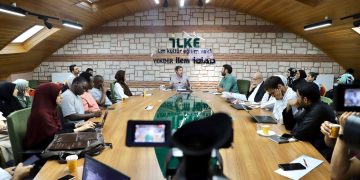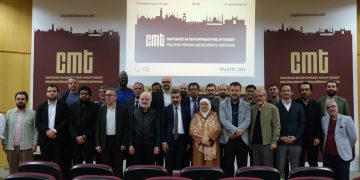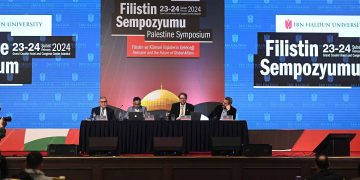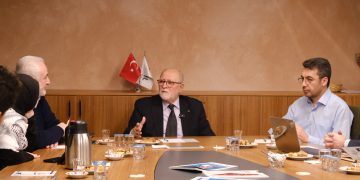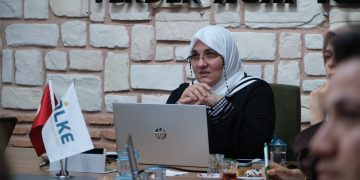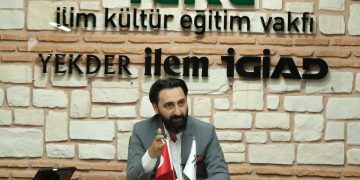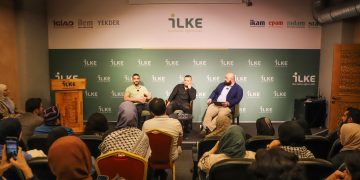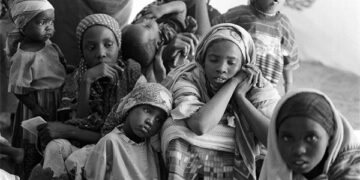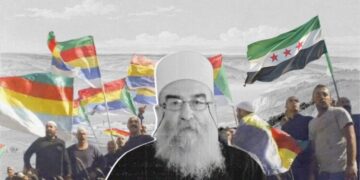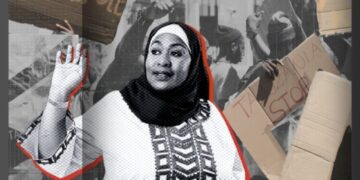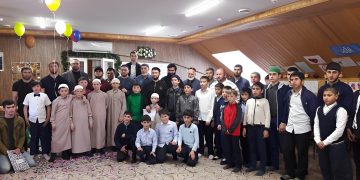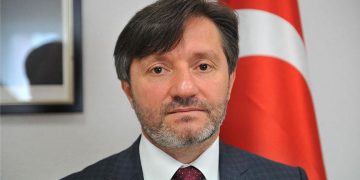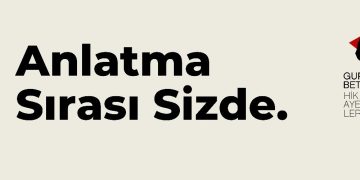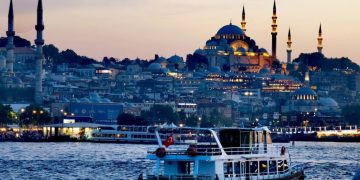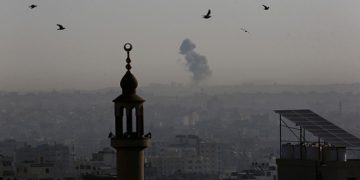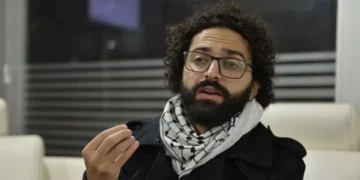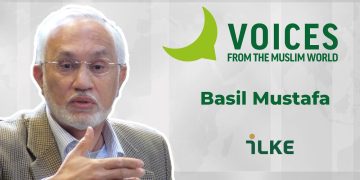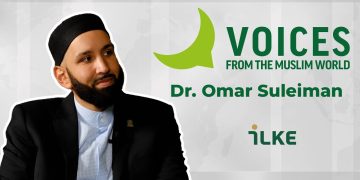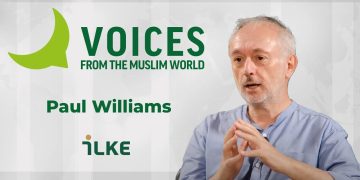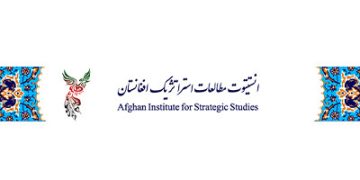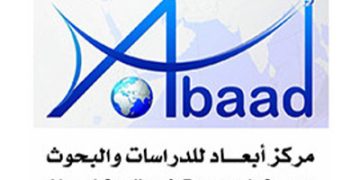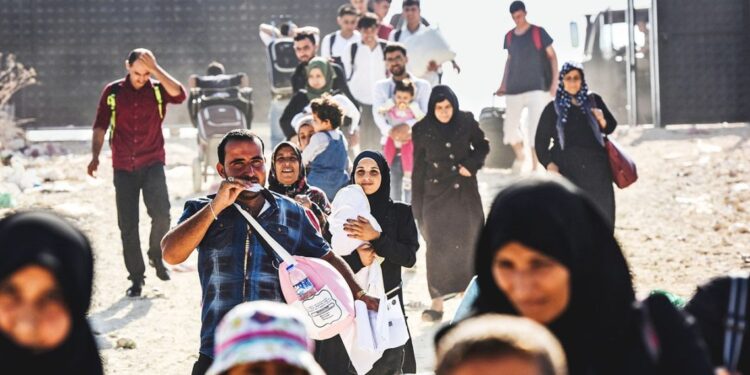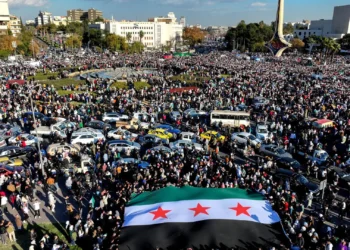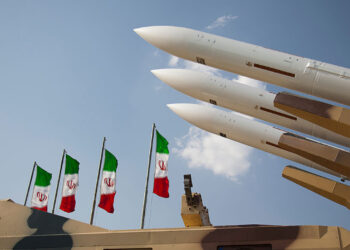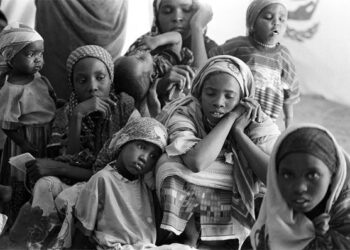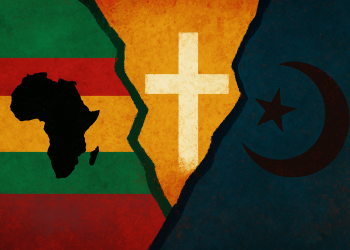This text has been translated from the original Turkish version.
The Syrian civil war, which began in 2011, led to the displacement of millions and triggered regional migration crises. The reconstruction process initiated following the 2024 regime change has made voluntary and sustainable returns a critical issue due to security concerns, damaged infrastructure, and economic fragility. This study examines the impacts of these developments in Türkiye and the international community.
Displacement of Syrians and Türkiye’s Temporary Protection Policy
As a result of the Syrian civil war that began in 2011, 13.8 million people were displaced, with 6.5 million leaving the country and 7.2 million remaining internally displaced. The majority of Syrians reside in Türkiye, Lebanon, and Jordan, while a smaller portion lives in Europe. Although Türkiye is a party to the 1951 Geneva Convention, it maintains a geographical limitation and therefore does not recognize Syrians as “refugees.” Instead, under the Law on Foreigners and International Protection enacted in 2013, Syrians are granted “temporary protection” status. Türkiye’s temporary protection regime, by limiting access to citizenship and regular employment for an extended period, has created uncertainty in Syrians’ living conditions, leading to children being excluded from education and adults working in the informal sector (Rygiel et al., 2016).
Between 2011 and 2017, the number of Syrians in Türkiye increased rapidly. In the following period, new arrivals declined due to border security measures and the implementation of “safe zone” policies, with population growth primarily driven by births. Decreases in the registered population are attributed to the removal of duplicate records, exclusion of unreachable individuals from registries, voluntary returns, migration to other countries, naturalization, and deaths (Erdoğan, 2023).
The Türkiye–EU Agreement and Criticisms
Although the migration negotiations between Türkiye and the EU, along with the 2016 Agreement, limited irregular migration, they sparked significant criticism over legal and human rights issues. During this process, intensive negotiations were held between Türkiye and the European Union on managing irregular migration, resulting in the 2013 Readmission Agreement, the 2015 Joint Action Plan, and the 2016 Türkiye–EU Agreement, which marked a significant turning point (Tekin, 2017). Under the 18 March 2016 Statement, irregular migrants arriving on Greek islands were to be returned to Türkiye, and in exchange, legal resettlement from Türkiye to Europe was to be arranged for each Syrian. Additionally, commitments included providing Türkiye with €3 billion in funding, visa liberalization, updating the Customs Union, and revitalizing the EU accession process (European Council, 2016).
However, since the agreement does not have the status of an international treaty, its legal legitimacy has been limited. It has faced intense criticism due to risks of mass deportations, lack of individual asylum assessments, discrimination, and Türkiye’s not meeting the criteria of a safe third country. The UN High Commissioner for Refugees, civil society organizations, and the European Parliament either did not participate in the arrangement or sharply criticized it (Tekin, 2017). The “one-for-one” exchange mechanism of the EU–Türkiye Agreement has been particularly criticized. Amnesty International emphasized that it effectively commodifies refugees, while UN High Commissioner for Refugees Filippo Grandi highlighted concerns about access to fundamental rights for individuals returned to Türkiye (Rygiel et al., 2016).
In practice, only financial aid was provided, while other promises went unfulfilled. Following the agreement, irregular migration decreased significantly, and some integration rights were granted to Syrians. However, criticisms emerged that the EU had turned Türkiye into a “buffer state” and sidelined human rights concerns. Initially, Syrians were positively received in Türkiye, but as the economic crisis deepened and perceptions of permanence grew, social backlash intensified, and anti-refugee sentiment increased. While the agreement reduced migration in the short term, in the long term, it made Türkiye–EU relations primarily interest-based and heightened social tensions (Kaya, 2022).
Regime Change and the Reconstruction Process in Syria
On December 8, 2024, with a regime change, Syria entered a new era, stepping into the reconstruction process after years of Ba’athist rule and civil war. The new government prioritized strengthening state capacity, ensuring representation through an inclusive cabinet, safeguarding electoral security, and protecting freedom of expression. Both internally and externally displaced Syrians remain, and the reconstruction cost is estimated at approximately $923 billion. Critical elements of the transitional process include military and security reforms, the dismantling of armed groups, transitional justice, and the fair conduct of the 2030 elections. While international support is decisive, it is emphasized that such assistance must respect Syria’s sovereignty and the will of its people. The EU and UN regard an inclusive transitional process as a precondition for lifting sanctions. However, the resurgence risk of ISIS, the presence of the YPG in the northeast, and Israeli attacks continue to pose significant security threats. Moreover, the legacy of authoritarian rule and the traumas of war have brought vulnerabilities such as terrorism, coup risks, separatist movements, and economic-political instability. The weakness of state capacity and the necessity for institutions to survive remain among the most critical challenges of the transitional process (Akgün, 2025).
Voluntary Return Process
According to UNHCR surveys, 80% of Syrian refugees expressed a desire to return to Syria at some point, while 27% indicated that they wished to return within the next 12 months.
According to UNHCR surveys, 80% of Syrian refugees expressed a desire to return at some point, while 27% indicated that they wished to return within the next 12 months (UNHCR, 2025b). For Syrians residing in Türkiye, a key issue on the agenda is voluntary return. Voluntary, safe, dignified, and orderly return refers to the process by which individuals under international or temporary protection return to their country of citizenship or the country where they are legally residing, of their own free will, either after their protection needs have ended or within the framework of organized programs. In this process, it is essential that individuals are not subjected to any pressure or coercion, and that the return occurs under conditions that respect human dignity. That reintegration is sustainably supported, in accordance with the principles of international law (Directorate General of Migration Management, 2025a).
According to the Directorate General of Migration Management, as of 15 August 2025, voluntary returns of Syrians increased following the developments after 8 December 2024. Since that date, 411,649 individuals have returned to their country, bringing the total number of returns since 2016 to 1,151,652. Meanwhile, the number of Syrians currently under temporary protection in Türkiye is recorded as 2,543,711 (Directorate General of Migration Management, 2025b).
According to the Directorate General of Migration Management, as of 15 August 2025, voluntary returns of Syrians increased following the developments after 8 December 2024. Since that date, 411,649 individuals have returned to their country, bringing the total number of returns since 2016 to 1,151,652. Meanwhile, the number of Syrians currently under temporary protection in Türkiye is recorded as 2,543,711 (Directorate General of Migration Management, 2025b).
Current Situation in Syria and the Humanitarian Crisis
Syria continues to face severe humanitarian crises in the aftermath of the war. Although approximately 750,000 people have returned to their regions since November 2024, around 7 million remain internally displaced; one-fifth of them, particularly in Idlib, Aleppo, and Hama, live in tents or temporary shelters. A significant portion of returnees reside in damaged or unfinished buildings, while most of those returning from abroad come from Lebanon, Türkiye, and Iraq (IOM, 2025a). The UN High Commissioner for Refugees anticipates that within 2025, 1.5 million refugees and 2 million internally displaced persons will return (UNHCR, 2025b).
Since December 2024, humanitarian aid has reached more than 315,000 people, with the target of increasing this number to 1.1 million in the first half of 2025. In addition, the digitization of property records ensures the protection of returnees’ housing and land ownership rights (IOM, 2025a). Nevertheless, more than 13 million people in Syria still require assistance, with access to essential services such as healthcare, education, clean water, and shelter remaining severely limited. Economic collapse, climate-related shocks, and mass displacement have heightened the population’s vulnerability, while security and infrastructure deficiencies continue to hinder return processes. Therefore, the country’s recovery requires not only humanitarian aid but also a long-term process based on the reconstruction of essential services and support for social cohesion (IOM, 2025b).
Obstacles to Sustainable Return
Although returns to Syria have increased, the legacy of conflict is still strongly felt. The main obstacles to sustainable return for the displaced include damaged infrastructure and lack of basic services, disruptions in education, economic insecurity, housing and property issues, as well as concerns over security and social cohesion (NRC, 2025). Electricity, water, sewage, and transportation infrastructure have been largely destroyed; in rural areas, infrastructure is nearly non-existent, while in urban centers it functions only at a limited level. International support is essential for reconstruction and the sustainability of services (International Refugee Rights Association, 2025).
While these problems reinforce one another, they are not insurmountable. Most returnees lack safe shelter, water, electricity, and access to education; economic opportunities are limited, with livelihoods especially scarce in rural areas (NRC, 2025). National income has dropped dramatically (2011: $67.5 billion; 2023: $9 billion), and the industrial and agricultural sectors have declined by 60–80% due to the war. Unemployment remains high, and access to basic services is difficult (International Refugee Rights Association, 2025). Uncertainty surrounding housing and property rights increases the risk of social tensions. Perceptions of security vary by region, while minorities and groups in former conflict areas remain at risk (NRC, 2025). Women, children, the elderly, and internally displaced persons face particular challenges, with psychological trauma widespread, making social cohesion and support projects a priority. Education and health services have been severely damaged, and schools and hospitals remain inadequate (International Refugee Rights Association, 2025).
The UN High Commissioner for Refugees is therefore providing cash grant assistance, identity and biometric registration systems, return centers, and multi-sectoral services at border points to support returns (UNHCR, 2025b). However, sustainable and dignified return cannot be achieved through short-term aid alone; it requires long-term, integrated programs that encompass material, legal, and social conditions across the entire country. Long-term recovery must go beyond physical reconstruction to focus on building trust, restoring rights, and ensuring that Syrians have agency over their own future (NRC, 2025).
Conclusion: Long-Term Solutions and the Role of the International Community
As of 2025, humanitarian aid needs in Syria have reached 16.5 million people; however, these needs cannot be addressed solely through temporary relief but must be addressed with long-term, development-based strategies. Following the increase in returns after December 8, 2024, the trend toward repatriation has strengthened; nevertheless, unpredictability in security, infrastructure damage, and economic fragility continue to make sustainability a matter of debate (UNHCR, 2025a).
Three key dimensions stand out for sustainable return in Syria: legal guarantees, economic reconstruction, and social cohesion. In terms of legal guarantees, securing property rights through digital records and ensuring returnees’ access to rights granted by citizenship are critical. Economic reconstruction entails creating livelihoods, revitalizing labor markets, repairing infrastructure, and channeling international investment. Social cohesion involves building trust in the post-conflict context, integrating different groups, and restoring the functionality of social services. The absence of these elements jeopardizes the permanence of returns and risks long-term stability (NRC, 2025). At the same time, the facilitation of exit procedures by host countries is a significant factor supporting voluntary returns (UNHCR, 2025b).
The Syrian civil war, ongoing since 2011, has led to the displacement of millions and strengthened perceptions of permanence in Türkiye and neighboring countries. Meanwhile, Türkiye-EU relations have been shaped within the framework of interest-based cooperation. For Türkiye, the refugee issue necessitates both strengthening integration policies to ease social tensions and supporting the temporary protection regime through long-term planning and conducting returns in a voluntary, safe, and dignified manner.
The reconstruction process in Syria, initiated after the regime change, directly affects the sustainability of returns due to security risks, infrastructure deficiencies, and economic vulnerabilities. In this context, military reform, the restoration of basic services, the safeguarding of property rights, and the implementation of social cohesion programs stand among the priority measures.
The support of the international community should not be limited to humanitarian aid alone; it must be provided through development-focused, long-term programs that offer permanent financial and technical contributions to host countries such as Türkiye, Lebanon, and Jordan. Additionally, human rights violations that occurred during the war, such as deaths, torture, and systematic bombings, must be taken into account, ensuring that national and international law play an active role in the return and reconstruction processes. All these efforts should be carried out with respect for Syria’s sovereignty and the will of its people; returns must be non-coercive and entirely voluntary, recognizing that the crisis is not temporary but a long-term socio-political reality. At the same time, competition among regional actors should not generate new conflict dynamics.
References
Akgün, M. H. (2025). Transition Process and Constitutional Declaration in Syria, SETA. Accessed August 18, 2025, from https://media.setav.org/tr/dosya/2025/07/suriyede-gecis-sureci-ve-anayasal-bildirge.pdf
Erdoğan, M. M. (2023). Syrian Barometer-SB-2023: “Framework for Living in Harmony with Syrians.” https://www.unhcr.org/tr/wpcontent/uploads/sites/14/2023/01/SB-2021-TR-MME-FINAL-19-Ocak2023.pdf
European Council. (2016). EU-Türkiye statement, 18 March 2016. Accessed August 17, 2025, from https://www.consilium.europa.eu/en/press/press-releases/2016/03/18/eu-Türkiye-statement/
Directorate General of Migration Management. (2025a). Voluntary, Safe, Dignified, and Orderly Return. Accessed August 21, 2025, from https://www.goc.gov.tr/gonullu-geri-donus
Directorate General of Migration Management. (2025b). Voluntary, Safe, Dignified, and Orderly Returns Gain Momentum. Accessed August 21, 2025, fromhttps://www.goc.gov.tr/gonullu-geri-donus
IOM. (2025a). Nearly 750,000 Displaced Syrians Have Returned to Their Places of Origin, New IOM Data Reveals. Accessed August 19, 2025, from https://www.iom.int/news/nearly-750000-displaced-syrians-have-returned-their-places-origin-new-iom-data-reveals
IOM. (2025b). IOM Re-establishing Presence Across Syria to Support Humanitarian Efforts. Accessed August 19, 2025, from https://www.iom.int/news/iom-re-establishing-presence-across-syria-support-humanitarian-efforts
Kaya, A. (2022). EU-Türkiye Refugee Deal: Buffer State. TÜSİAD Global Politics Forum Article Series, 2, 5-18.
NRC. (2025). Beyond Return: Ensuring Sustainable Recovery & (Re)-integration in Syria. Accessed August 18, 2025, from https://www.nrc.no/resources/reports/beyond-return-ensuring-sustainable-recovery–re-integration-in-syria
Rygiel, K., Baban, F., & Ilcan, S. (2016). The Syrian refugee crisis: The EU-Türkiye ‘deal’ and temporary protection. Global Social Policy, 16(3), 315-320.
Tekin, B. Ç. (2017). The Effects of the Türkiye-EU Agreement on Irregular Migration on the European Union’s International Identity. Marmara University Journal of Economics and Administrative Sciences, 39(2), 659-680.
International Refugee Rights Association. (2025). Return to Syria After the Assad Regime and Internally Displaced Persons Report. Accessed August 26, 2025, fromhttps://umhd.org.tr//page/esed-rejimi-sonrasi-suriye-ye-geri-goc-ve-ulke-icinde-yerinden-edilenler-raporu/8883
UNHCR. (2025a). UNHCR Syria Operational Update (June-July, 2025). Accessed August 18, 2025, from https://data.unhcr.org/en/documents/details/118175
UNHCR. (2025b). UNHCR Operational Framework Voluntary Return of Syrian Refugees and IDPs 2025. Accessed August 24, 2025, from https://www.unhcr.org/media/2025-operational-framework-voluntary-return-syrian-refugees-and-idps
Opinions expressed in this article are the author’s own and do not necessarily reflect Platform: Agenda of the Muslim World editorial policy.

